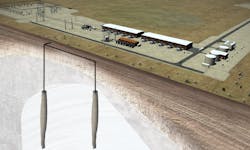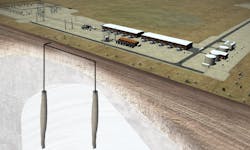As with any huge topic that’s hard to contemplate, it’s important to break sustainability up into approachable pieces, tackle the well-known low-hanging fruit of simpler projects that can deliver with the most returns, score some quick wins, use early successes to secure buy-in and funding for more difficult sustainability tasks, and convince others to do the same.
For instance, Emerson aligns its sustainability approach with the three scopes for emissions in the greenhouse gas (GHG) protocol developed by World Resources Institute (WRI) and the World Business Council for Sustainable Development (WBCSD) which include:
- Scope 1—emissions that an enterprise itself produces, such as direct emissions from natural gas burned at Emerson’s facilities.
- Scope 2—indirect emissions from power generated elsewhere that it buys for use at its sites.
- Scope 3—all indirect emissions included in Scope 2 that occur in upstream and downstream value chains in which Emerson participates.
“The three scopes affect Emerson and our partners internally, indirectly and along our supply chains. We’re working to reach net-zero emissions across Emerson for Scopes 1 and 2 by 2030, drive a 25% reduction in Scope 3 emissions by 2030, and reach 100% on all three by 2045,” says Bob Yeager, president of power and water solutions at Emerson. “However, for our customers, shifting from coal and gas to renewables makes the grid more susceptible to frequency disturbances. Emerson is changing its power and water portfolios to help customers through their transitions. Our solutions previously managed many coal-fired plants, but now our Ovation DCS and software automates about 50% of overall North American power generation capacity. Fortunately, many of the analytics and reliability tools used in the fossil-fuel space can also be used in the renewables space.”
Alternative acquisitions
“Wind turbines need to control blade pitches and other mechanical issues, and Emerson’s Ovation software lets users optimize them and the output of the entire wind farm,” adds Yeager. “For example, we can dynamically derate wind turbines to deal with ambient wind speed changes. This means changing blade pitches to produce less power, which can preserve turbine life.”
Likewise, Golden Valley Electric Association recently worked with Emerson to digitalize and improve the reliability of low-cost electricity supplied by its almost 25-MW Eva Creek wind farm near Fairbanks, Alaska. Completed in 2021, the upgrade included Ovation and OSI monarch software, wind farm automation and sustainable-grid software, which increased the reliability of GVEA’s turbines, and contributed to a 65% reduction in its operations and maintenance costs (Figure 1).
“Emerson is a key collaborator in our goal to increase access to clean energy for our customers in northern Alaska,” says Frank Perkins, VP of power supply at GVEA. “Our investment in a common automation platform helps us efficiently incorporate more renewable energy and minimize our carbon footprint.”
Hydrogen in the hub
The hub’s short- and long-duration storage capabilities will be used during peak season and year-round by the 840-MW Intermountain Power Project (IPP Renewed) near Delta, Utah. IPP Renewed will use 30% by volume hydrogen fuel in Mitsubishi Power’s M501JAC gas turbines at startup, and transition to 100% by volume hydrogen by 2045.
To optimize efficient and safe production and storage at the hub, Mitsubishi Power will deploy an Ovation control and safety platform for reliable monitoring and control, as well as emergency shutdown, fire and gas protection. The platform will also gather and contextualize data from the hub’s various third-party systems to help eliminate complexity and risk. Emerson’s PACSystems RSTi-EP I/O will provide easier field connectivity and facilitate project changes without extending timelines or increasing cost, while Emerson’s AMS Device Manager will monitor the health of plant assets to further improve safety, reliability, efficiency and sustainability.
“Generating, storing and transmitting electricity with zero carbon emissions is critical to meeting the world’s sustainable power generation needs,” says Michael Ducker, senior VP of hydrogen infrastructure for Mitsubishi Power Americas and president of Advanced Clean Energy Storage I. “Emerson’s hydrogen expertise and digitally connected architecture design will help shorten time to start up, while also developing a safe, reliable and easily scalable transmission system to meet our goals for renewable energy production and storage.”
Yeager reports that other process industry users can likely achieve similar sustainability results by optimizing their applications to reduce CO2 emissions, which can be aided by adopting digital twins and other digitalization technologies. “We can use digital twins to model a whole power plant in real time, integrate results with the plant’s regular database, find useful changes in its operations, and better optimize its performance,” explains Yeager. “The digital twin can also employ analytics software to test possible logic changes, try out new scenarios safely and without risk, and add successful adjustment to the real plant.”
Sustainability series 2023
This article is part of the 2023 series on sustainability. Read more here.
About the Author

Leaders relevant to this article:



